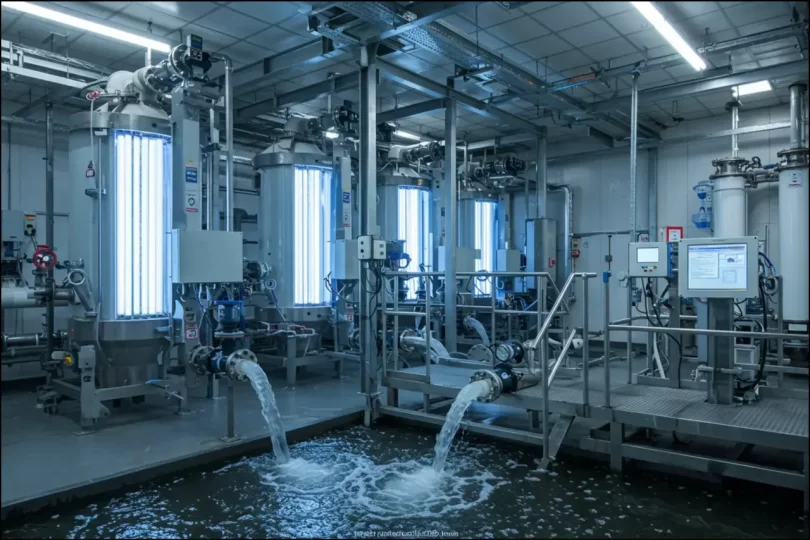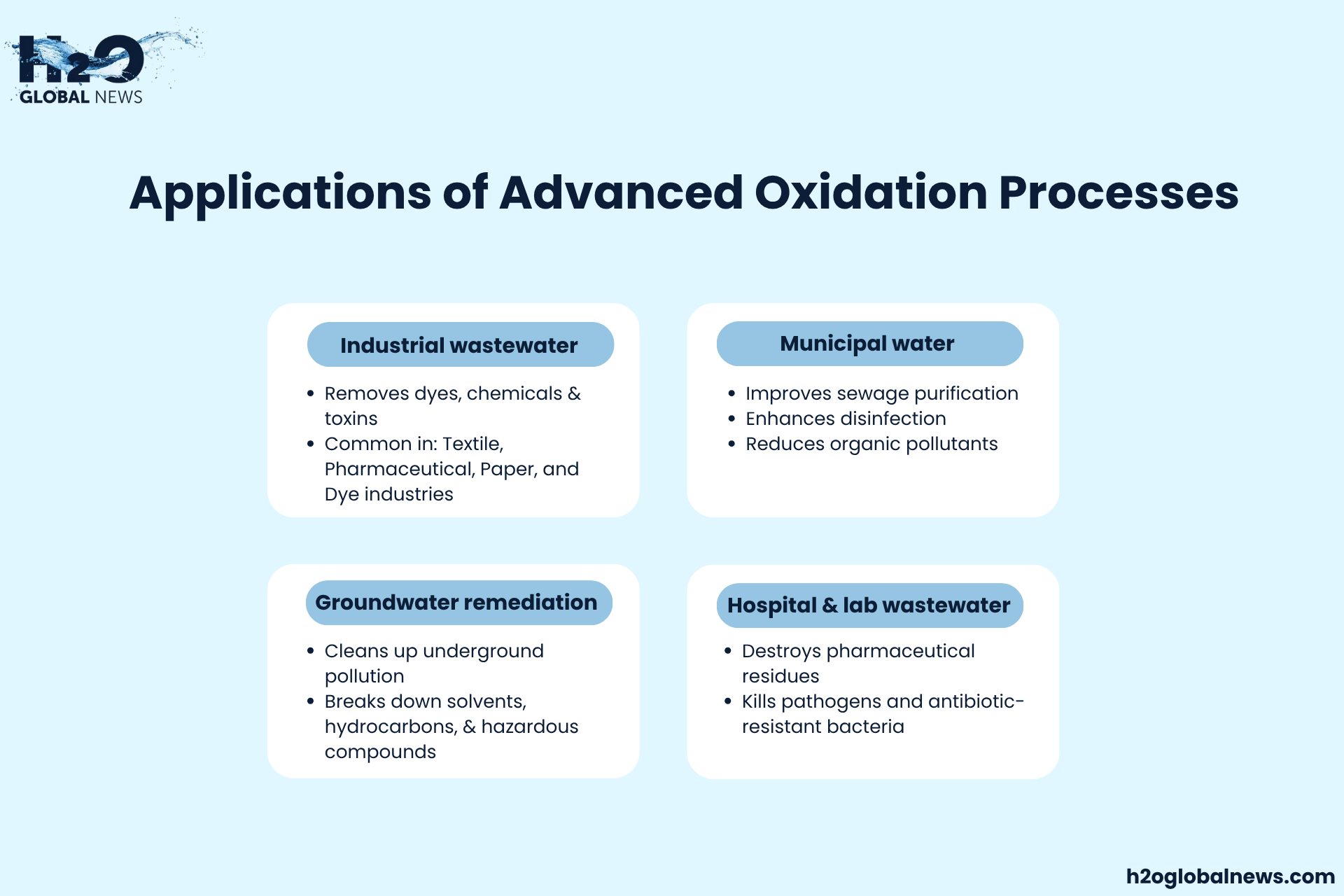Water is one of our most valuable resources, but it’s also one of the most vulnerable. As industries grow and cities expand, our water sources are exposed to more pollutants than ever. From chemical spills to pharmaceuticals, traditional water treatment methods can’t always keep up. That’s where the Advanced Oxidation Process (AOP) comes in. It’s a powerful new approach in the world of wastewater treatment that’s gaining attention for all the right reasons.
What Is the Advanced Oxidation Process?
The advanced oxidation process is a chemical treatment method designed to remove pollutants that are difficult to break down from water. It utilizes strong oxidants, such as hydroxyl radicals (OH•), to break down toxic compounds that other treatments can’t tackle. These radicals are powerful and non-selective, meaning they attack a wide range of contaminants.
This process is beneficial when standard wastewater treatment processes fall short, making it a promising option in both industrial and municipal settings.
How Does AOP Work?
In simple terms, AOPs generate highly reactive molecules that quickly react with pollutants in the water. The most common ways to produce these radicals include:
- Using ozone (O3)
- Adding hydrogen peroxide (H2O2)
- Applying ultraviolet (UV) light
These methods can be used alone or in combination to create an effective oxidation in water treatment system. The goal is to break down harmful substances into harmless ones, like water and carbon dioxide.
Why Is AOP Gaining Popularity?
Traditional chemical water treatment systems are good at removing many common pollutants, but they often struggle with newer, more complex chemicals such as pesticides, pharmaceuticals, or PFAS (“forever chemicals”).
AOPs can effectively tackle these difficult contaminants. As a result, AOPs are being added to many water treatment technologies around the world. The use of AOP water systems is now considered a vital step for improving overall oxidation water treatment performance.
Key Benefits of AOPs in Water Treatment
Advanced oxidation processes aren’t just a new trend; they offer real, science-backed benefits that make them a smart choice for modern water and wastewater treatment systems. Whether you’re dealing with factory waste, city sewage, or hard-to-remove chemicals, here’s why AOPs are gaining popularity:
High Pollutant Removal
AOPs are highly effective in removing tough contaminants, even those that standard treatment methods can’t address. That includes industrial waste, chemical solvents, and stubborn organic compounds. These processes break down pollutants into carbon dioxide and water, making them safer for the environment.
Less Need for Extra Chemicals
One of the biggest benefits of AOP water treatment is that it creates powerful oxidants like hydroxyl radicals on-site. This means there’s less need to add extra chemicals, which reduces both cost and the risk of producing harmful leftovers.
Works on New and Emerging Pollutants
Increasingly, substances such as pharmaceuticals, personal care products, and endocrine-disrupting chemicals are being detected in wastewater. Many of these are too small or too strong for traditional systems, but advanced oxidation processes can break them down completely, helping treatment plants meet strict environmental rules.
Less Sludge to Deal With
Standard chemical or biological treatment methods often generate a significant amount of sludge, which then requires processing or disposal. AOPs produce much less sludge because they fully oxidize contaminants instead of just separating them. This helps lower disposal costs and reduces the load on landfills.
Helps Future-Proof Water Treatment Plants
As water contamination issues grow and treatment rules get stricter, cities and industries are turning to AOPs as a more dependable long-term solution. These systems are scalable and can be adjusted to meet future treatment needs.
Applications of Advanced Oxidation Processes
Advanced oxidation process for wastewater treatment is now used across many industries:
- Industrial wastewater: Removes chemicals from textile, dye, pharmaceutical, and paper production.
- Municipal water: Treats sewage and improves disinfection.
- Groundwater remediation: Breaks down underground pollution, including solvents and other hazardous substances.
- Hospital and laboratory wastewater: Destroys harmful pharmaceutical residues and pathogens.
Municipal and industrial plants often follow the WHO’s guidelines for drinking water when designing systems that utilize AOPs.
Pros and Cons of Advanced Oxidation Process
Like all treatment systems, AOP has benefits and drawbacks. Here’s a simple breakdown:
Pros:
- Breaks down harsh pollutants that other methods can’t
- Produces fewer harmful by-products
- Works well in combination with other treatments
- Fast reaction time and high efficiency
- Removes colour, odour, and pathogens
Cons:
- It can be expensive to install and maintain
- Requires careful handling of chemicals
- High energy use, especially with UV systems
- Not always suitable for large volumes without pretreatment
Future of Oxidation in Water Treatment
As water pollution becomes a growing concern, the role of oxidation in water treatment will likely expand. Researchers are exploring new ways to make the process cheaper, safer, and more energy-efficient. This includes combining AOPs with biological systems or solar-based methods.
Advanced systems are now being tested in developing regions where clean water is limited. As the cost of technology drops, AOP water treatment may become standard in both high-tech and low-resource areas.
Conclusion
The advancement of the advanced oxidation process for wastewater treatment represents a major step forward in the fight against water pollution. It offers a powerful, adaptable solution that can tackle what older systems leave behind. While there are some challenges to overcome, the future looks bright for this high-potential method.
Whether you’re a student, a water utility manager, or just someone curious about water oxidation, it’s clear that AOPs are here to stay, and they might just be one of our best tools in protecting clean water for the next generation.
FAQs
Q: Can AOPs be used to treat water at home?
Not really. AOP systems are designed for large-scale treatment, such as in factories or city wastewater treatment plants. They’re too powerful and expensive for home use, and they require expert handling due to the chemicals and equipment involved.
Q: Are advanced oxidation processes environmentally safe?
Yes, when used correctly. AOPs are designed to break down harmful chemicals without leaving behind toxic leftovers. They often turn dangerous pollutants into harmless water and carbon dioxide. However, they must be monitored carefully to avoid overuse of chemicals like ozone or hydrogen peroxide.
Q: What makes AOPs different from filters or UV water systems?
Filters remove things physically (like dirt or sand), and UV systems kill bacteria. AOPs go a step further; they destroy chemicals that filters or UV light can’t reach, such as pesticides, drug residues, or industrial solvents. That’s why AOPs are used when other systems don’t work well enough.
Q: Do AOPs remove bad smells or tastes from water?
Yes, AOPs are great at removing smells and tastes caused by chemical pollution. Since they break down smelly organic compounds, the treated water often smells and tastes cleaner afterward.
Q: Is the water treated by AOP safe to drink?
Yes, if the AOP system is part of a full water treatment process and monitored by experts. AOPs don’t work alone, they’re usually combined with filtration, sedimentation, or biological treatment to make sure water meets safety standards for drinking.
Q: Why aren’t AOPs used in every wastewater plant yet?
Mostly because of cost and complexity. AOPs are effective, but they are expensive to set up and run. Some smaller plants still use older systems that are cheaper, even if they don’t remove all pollutants. But as water pollution gets worse, more places are switching to AOPs.











